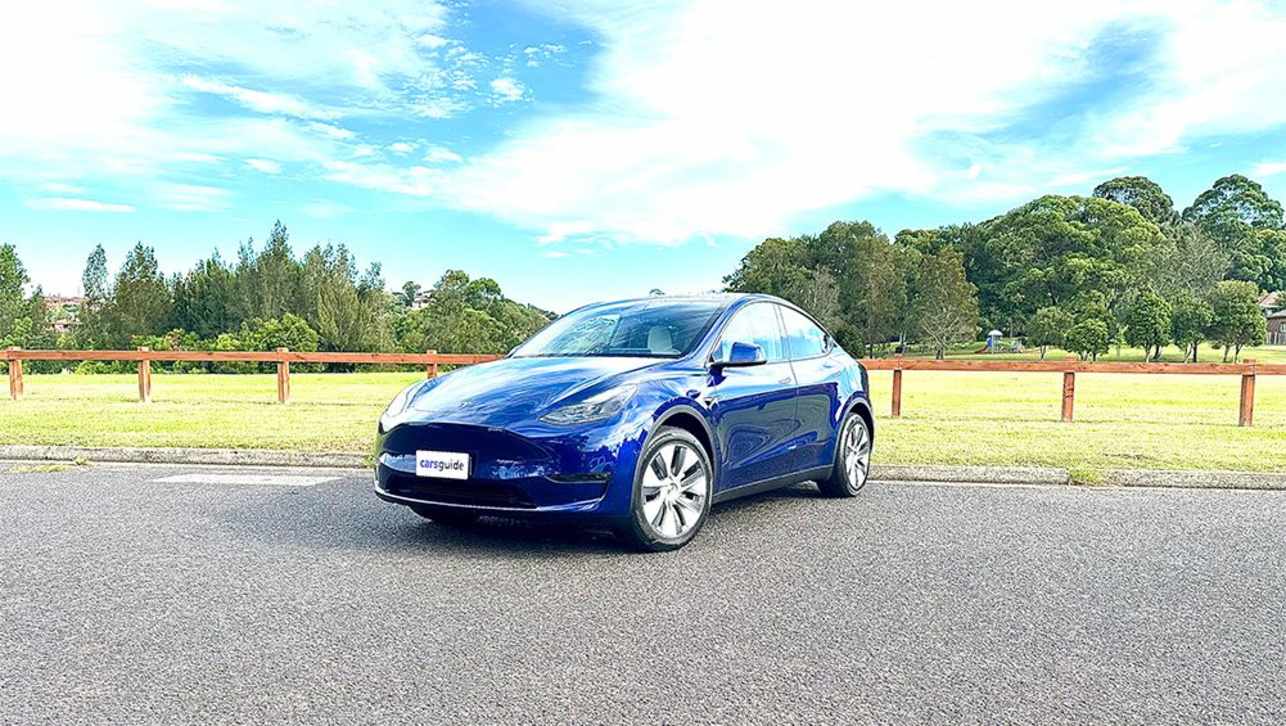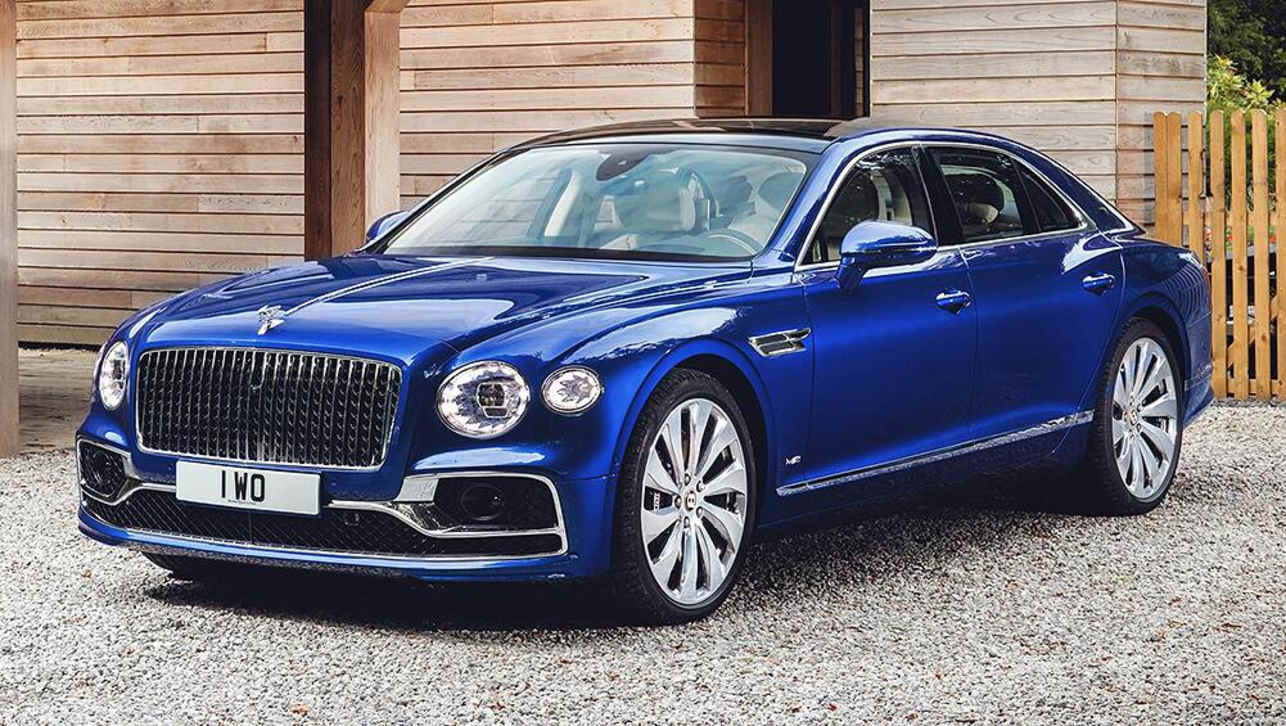Soccer mums and soccer stars -- and aspiring James Bond types -- your new car is almost ready. The covers came off the new Range Rover Sport in dramatic fashion on the eve of the New York motor show overnight.
The second-generation Range Rover Sport was unveiled as the company staged a fake car chase through the streets of Manhattan with James Bond star Daniel Craig behind the wheel. Meanwhile Hollywood celebrity Kim Kardashian played an unscheduled role, coincidentally checking into the swish hotel as Range Rover’s media guests were filing out.
The razamataz almost took too much of the spotlight away from the new Range Rover Sport, which has enough headline-worthy features without the fanfare.
When it goes on sale in Australia in November, the new Range Rover Sport:
- will be available with a seven-seat option for the first time;
- can be equipped with wifi that can connect up to eight mobile devices;
- has a smartphone app that can help locate the vehicle in car parks and check it’s locked;
- has a chilled centre-console tall enough to stow a bottle of bubbly;
- has a world-first wading depth sensor system that beeps if you’re in a water crossing that’s too deep;
- will be available with hybrid-diesel power by the year’s end and four-cylinder petrol power within two years;
- has slashed a massive 420kg off its weight thanks to extensive use on aluminium
- will be the fastest and most agile Range Rover to date.
The new Range Rover Sport is a key model for Land Rover and will give the company its third cash cow in two years. Range Rover production lines in the UK are already operating around the clock to try to keep up with demand for the new Evoque compact SUV and the Range Rover Vogue mothership.
The new model Range Rover Sport is due on sale in Australia from November onwards, with prices expected to be similar to those of the current model, which starts at $100,000.
Although it has familiar looks, the latest model is all-new from the ground-up. It is shaped less like a brick; sleeker proportions are designed to help it better slip through the air.
Significantly, the new model shares its aluminium core structure with the just-released fourth generation Range Rover Vogue rather than the mainstream Land Rover Discovery on which the previous model was based. Despite the change in materials, the company says it will retain its class-leading towing capacity of 3500kg.
The switch to aluminium has enabled the company to slash 420kg from the vehicle’s weight (to 2115kg to 2398kg, depending on the model), which is said to have led to a 10 per cent fuel saving across most of the range (Range Rover is yet to release exact figures).
But the Range Rover Sport will soon become even more miserly, with a diesel hybrid version due by the end of the year, and a turbo 2.0-litre four-cylinder petrol version within the next two years.
Range Rover would not reveal many details about the diesel hybrid but did say the electric motor would have enough grunt to move the car from rest (as it does in a Toyota Prius), and that just one electric motor would be sufficient to drive all four wheels. The hybrid system is said to add about 200kg to the car’s overall weight.
Range Rover also unveiled its revised engine line-up, which includes:
- supercharged 5.0-litre V8, 375kW/625Nm, 0 to 100km/h in 5.3 seconds
- supercharged 3.0-litre V6, 250kW/450Nm, 0 to 100km/h in 7.2 seconds
- SDV6 turbo diesel 3.0-litre V6, 190kW/600Nm, 0 to 100km/h in 7.2 seconds
- TDV6 turbo diesel 3.0-litre V6, 215kW/600Nm, 0 to 100km/h in 7.6 seconds
- SDV8 turbo diesel 4.4-litre V8, 250kW/700Nm, 0 to 100km/h in 6.9 seconds.
All models will be matched to an eight-speed automatic transmission. But, for the first time, Range Rover Sport buyers who don’t plan to go offroad can opt out of a low-range gearbox on selected models (a move which trims 22kg from their car’s weight).
Other technology highlights on the new Range Rover Sport include:
- 1700w 23-speaker sound system
- 12.3-inch display screen
- soft door-close
- automatic tailgate
- traffic sign-reading technology
- lane keeping and blind-spot warning
- overhead view cameras
- reverse traffic detection
- automatic parallel and perpendicular parking
- torque vectoring, electronic-locking rear differential.
The biggest question mark for many potential buyers, however, remains Land Rover’s reliability and durability. The company says its warranty claims have come down as quality has improved in recent years, but anecdotal evidence -- and first-hand experience -- suggests there is still ample room for improvement.
To that end, Land Rover said it built more than 200 prototype test mules for the development of the new Range Rover Sport. It says it tested the car in 20 countries, in temperatures ranging from 52 degrees Celsius to minus 40 degrees Celsius, and at up to 4500 metres above sea level, completing more kilometres of durability testing than any model before it.
This reporter is on Twitter: @JoshuaDowling








.jpg)

.jpg)
.jpg)























.jpg)

.jpg)
.jpg)

.jpg)

.jpg)
.jpg)

.jpg)
.jpg)




Comments